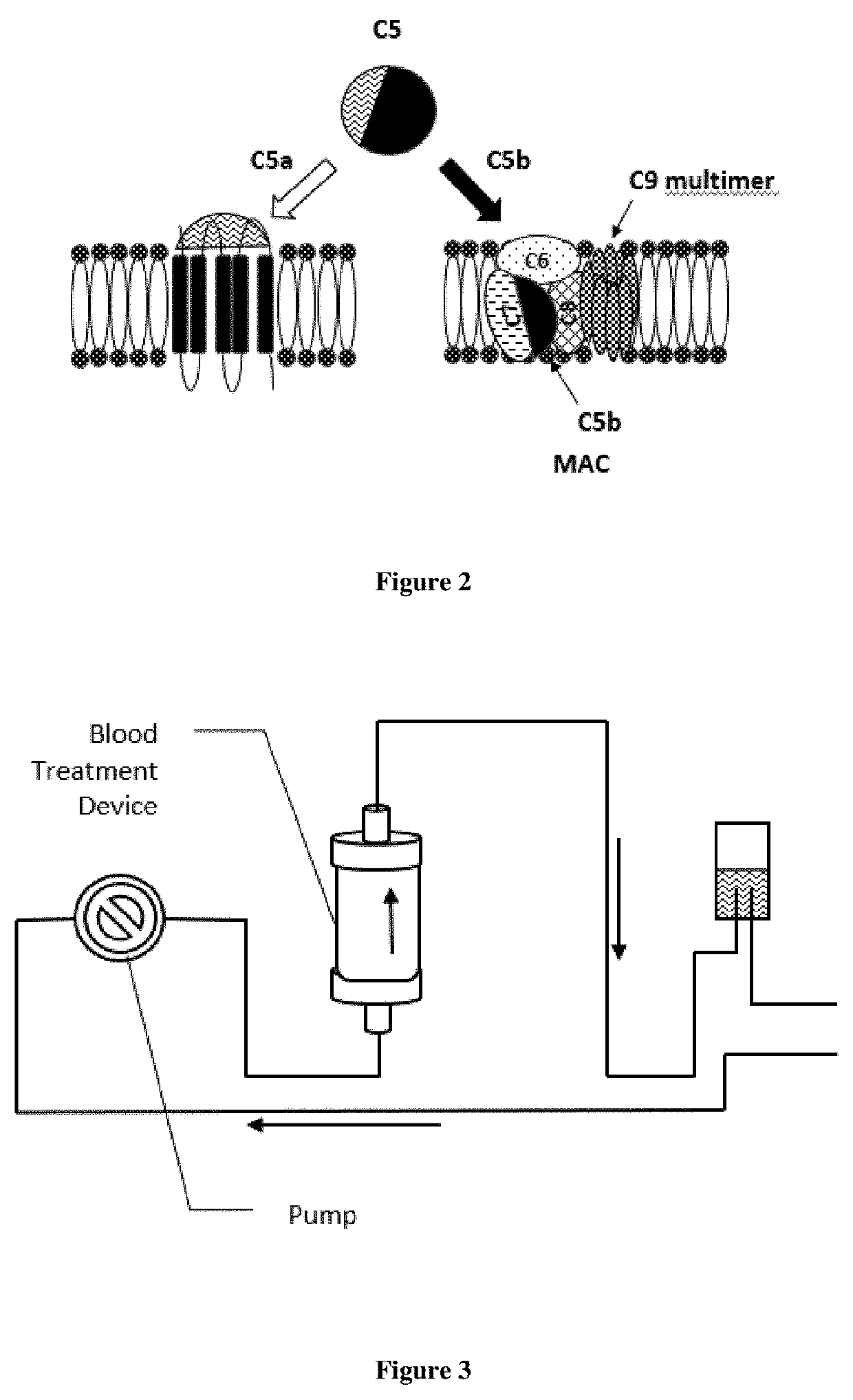Extracorporeal devices and methods of treating complement factor related diseases
a technology of complement factor and extracorporeal treatment, which is applied in the field of extracorporeal treatment of patients having a complement factor related disease, can solve the problems of large complexes that cannot be easily cleared, complexes that are too large to be easily absorbed, and large complexes that are no longer soluble, so as to reduce the likelihood of forming a t cell-mediated allograft vasculopathy lesion
- Summary
- Abstract
- Description
- Claims
- Application Information
AI Technical Summary
Benefits of technology
Problems solved by technology
Method used
Image
Examples
example 1
on of a Matrix Comprising an Epoxy Functionalized Resin
[0171]First, the resin is equilibrated. The resin is washed with immobilization buffer and filtered. A resin / buffer ratio of 1 / 1 (w / v) is preferable. The immobilization buffer is chosen to be compatible with a recombinant anti-human C5 antibody manufactured by BAC B.V. (Naarden, Netherlands) and its stability. The process is repeated for 2-4 times. The antibody solution is prepared by dissolving the native antibody in immobilization buffer. For example, 100-200 mg antibody can be loaded per gram of wet resin. Protein concentration can be determined by using standard protein content assays. The antibody is dissolved in a sufficient amount of buffer to obtain a ratio resin / buffer of 1 / 4 (w / v). This ratio can be optimized depending on the antibody used (range can vary from 1 / 1-1 / 4). Immobilization starts with the transfer of the immobilization buffer containing the antibody into the immobilization vessel. The epoxy-functionalized r...
example 2
on of a Matrix Comprising an Epoxy-Functionalized Resin
[0172]First, the resin is equilibrated. The resin is washed with immobilization buffer and filtered. A resin / buffer ratio of 1 / 1 (w / v) is preferable. The immobilization buffer is chosen to be compatible with the antibody and its stability. In a second step 2% glutaraldehyde buffer is prepared starting from a solution of 25% (w / v) glutaraldehyde. A 2% glutaraldehyde (v / v) solution is prepared using the immobilization buffer. In a third step, the amino resin is activated by adding the 2% glutaraldehyde buffer prepared in step 2 to the resin. The optimal volume of 2% glutaraldehyde buffer should be in the range of resin / buffer ratio of 1 / 4 (w / v). The slurry is left to mix for 60 min at 20° C.-25° C. The beads are then filtered and washed with immobilization buffer using a resin / buffer ratio of 1 / 4 (w / v). It should be avoided to store pre-activated resin for a period longer than 48 h. Beads are then ready for the immobilization step...
PUM
| Property | Measurement | Unit |
|---|---|---|
| molecular mass | aaaaa | aaaaa |
| molecular mass | aaaaa | aaaaa |
| concentration | aaaaa | aaaaa |
Abstract
Description
Claims
Application Information
 Login to View More
Login to View More - R&D
- Intellectual Property
- Life Sciences
- Materials
- Tech Scout
- Unparalleled Data Quality
- Higher Quality Content
- 60% Fewer Hallucinations
Browse by: Latest US Patents, China's latest patents, Technical Efficacy Thesaurus, Application Domain, Technology Topic, Popular Technical Reports.
© 2025 PatSnap. All rights reserved.Legal|Privacy policy|Modern Slavery Act Transparency Statement|Sitemap|About US| Contact US: help@patsnap.com



